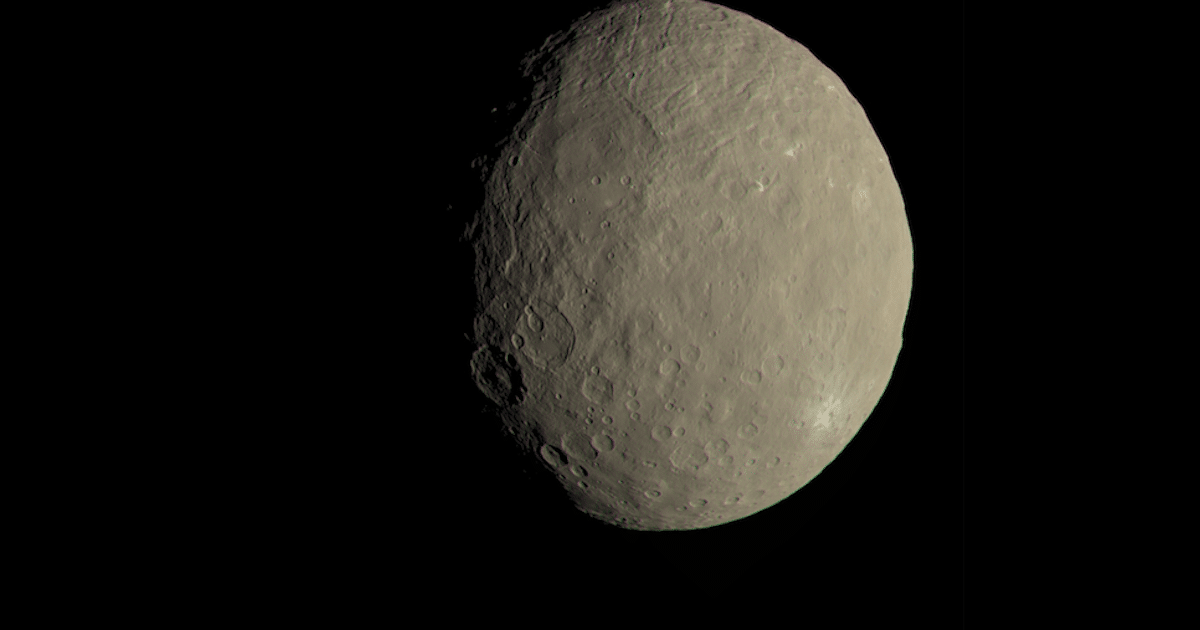New Insights on Organic Molecules on Ceres

The dwarf planet Ceres, located in the asteroid belt between Mars and Jupiter, has long fascinated scientists. Recent advancements in artificial intelligence (AI) have allowed researchers to reassess the presence of organic molecules on this intriguing celestial body. Using data collected by NASA’s Dawn spacecraft, scientists have created detailed maps of areas rich in these organic compounds. This new analysis challenges previous assumptions about the origins of these molecules, suggesting they may have come from asteroid impacts rather than internal processes.
Organic Deposits Mapped with AI Analysis
A groundbreaking study led by scientists from the Max Planck Institute for Solar System Research (MPS) in Germany has utilized AI to analyze spectral imaging data from the Dawn spacecraft. This analysis has resulted in a comprehensive map highlighting regions on Ceres that are rich in organic materials. Ranjan Sarkar, a key researcher in the study, noted that these organic deposits are surprisingly rare on Ceres. Furthermore, they do not show any signs of cryovolcanic activity, which was previously thought to be responsible for transporting organic materials from beneath the surface.
The findings indicate that the organic compounds found on Ceres are not linked to cryovolcanism. This revelation is significant because it contradicts earlier beliefs that volcanic activity played a crucial role in delivering these molecules to the surface. Instead, the study suggests that the organic materials may have been deposited by external sources, specifically through asteroid impacts. This new understanding opens up exciting avenues for further research into the history and composition of Ceres.
Asteroids from the Outer Belt as a Possible Source
The study also proposes that the organic compounds on Ceres were likely delivered by low-velocity asteroid impacts. Simulations conducted by the research team indicate that asteroids from the outer asteroid belt frequently collide with Ceres. However, these impacts occur at relatively slow speeds, which helps preserve the organic materials from destruction due to heat. Martin Hoffmann, another researcher at MPS, emphasized that there is no evidence of volcanic or tectonic activity at any of the organic deposit sites. This absence of geological features such as trenches, canyons, or volcanic vents further supports the idea that these molecules arrived from external sources.
The implications of these findings extend beyond Ceres itself. They suggest that organic molecules may have existed in the outer solar system early in its history. Over time, these compounds could have been transported to inner planets, including Earth. This raises intriguing questions about the role of such organic materials in the development of life on our planet. Understanding the origins of these compounds could provide valuable insights into the conditions that fostered life in the early solar system.
The Future of Research on Ceres
The new insights gained from AI analysis of Ceres’ organic deposits mark a significant advancement in our understanding of this dwarf planet. As researchers continue to explore the data collected by the Dawn spacecraft, they will likely uncover more about the geological and chemical processes at play on Ceres. Future missions and studies may focus on further investigating the origins of these organic molecules and their implications for astrobiology.
Observer Voice is the one stop site for National, International news, Editor’s Choice, Art/culture contents, Quotes and much more. We also cover historical contents. Historical contents includes World History, Indian History, and what happened today. The website also covers Entertainment across the India and World.

